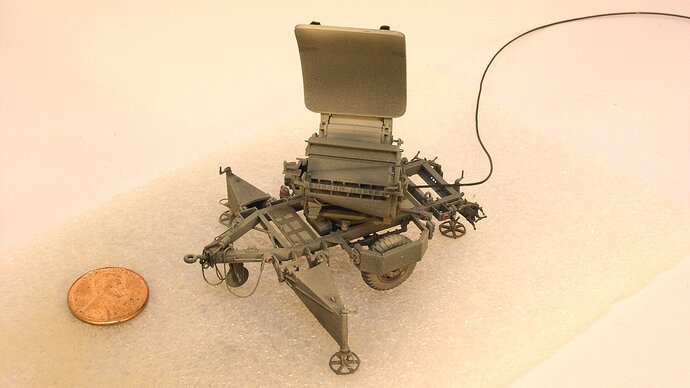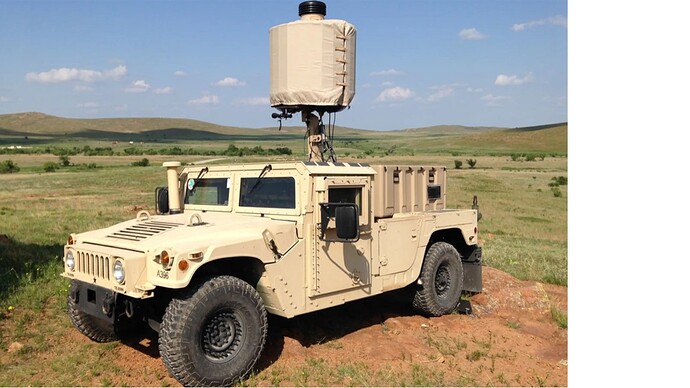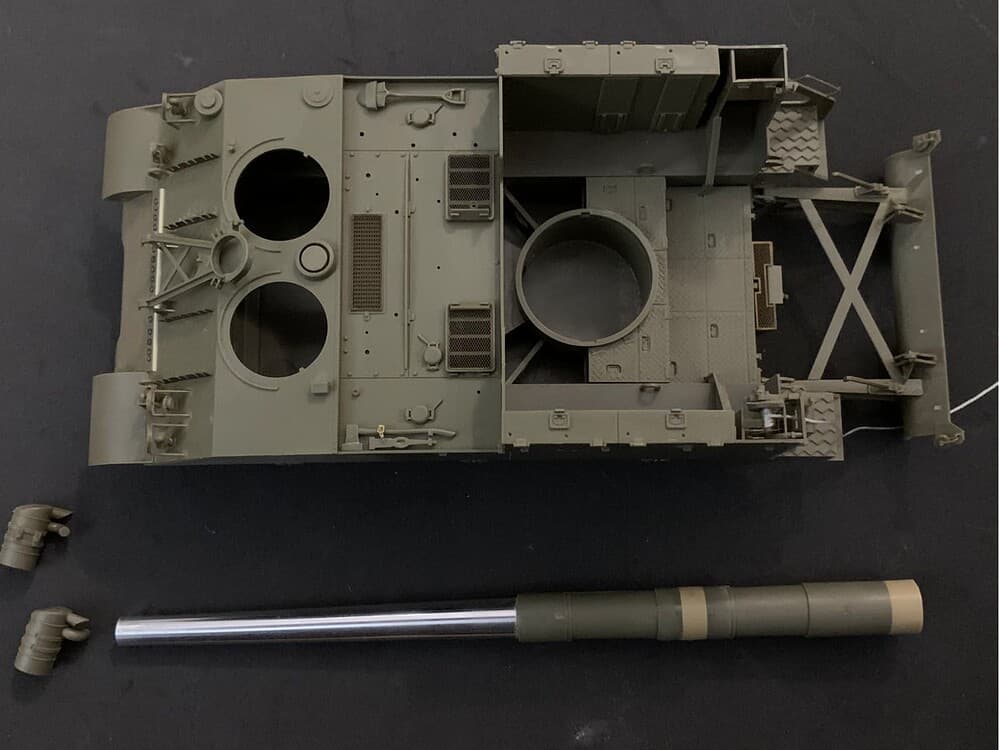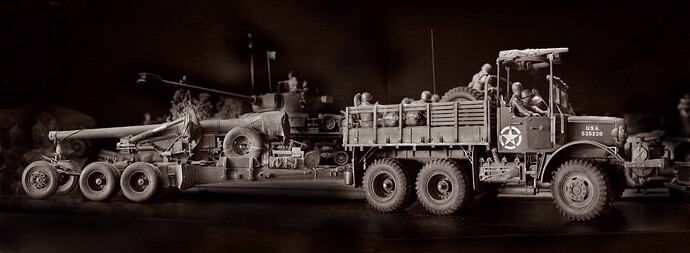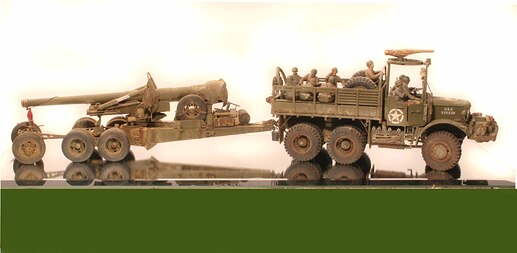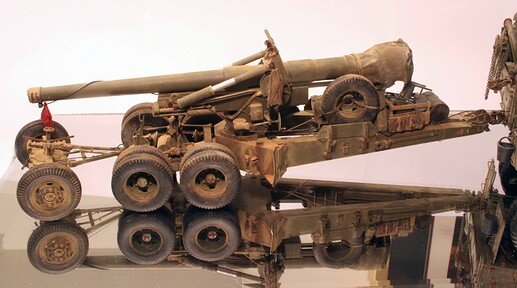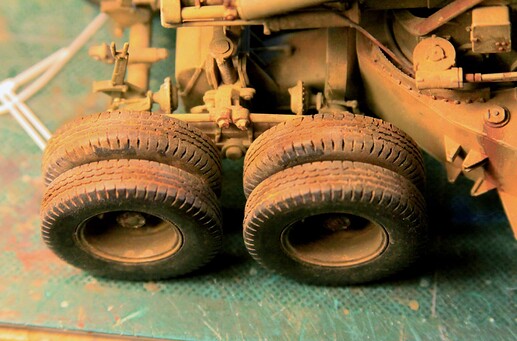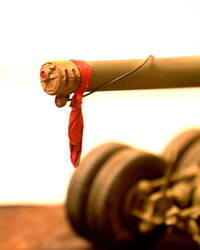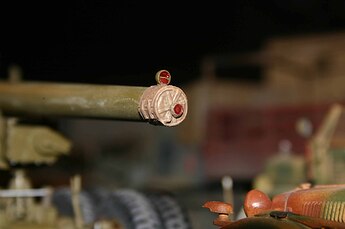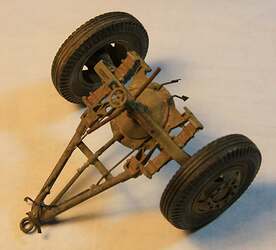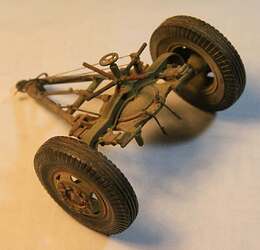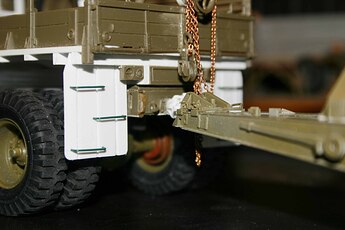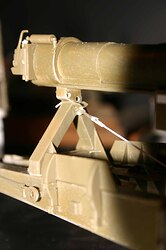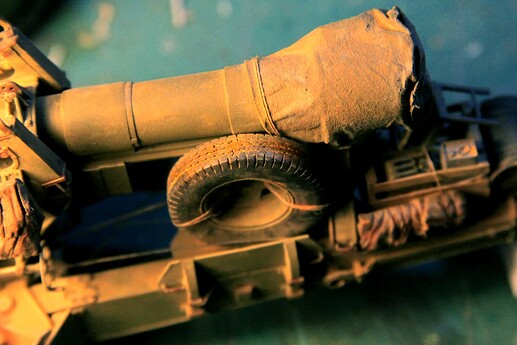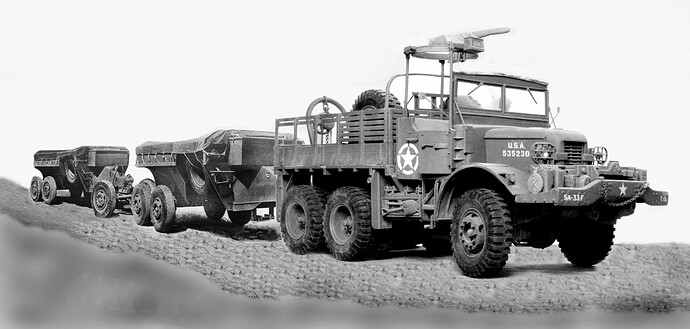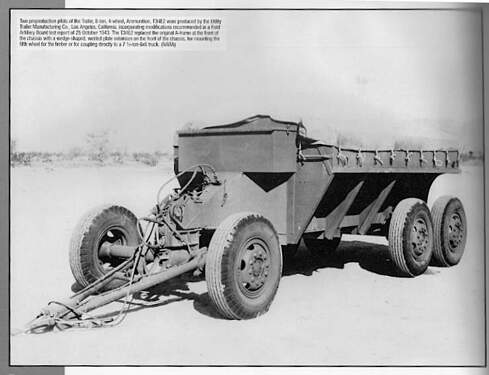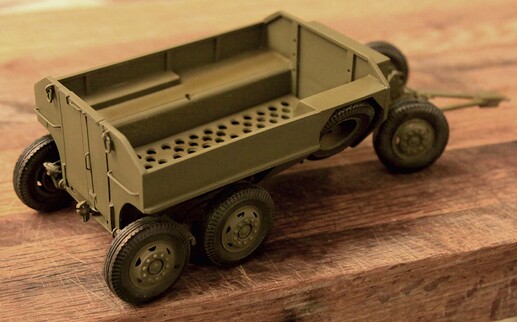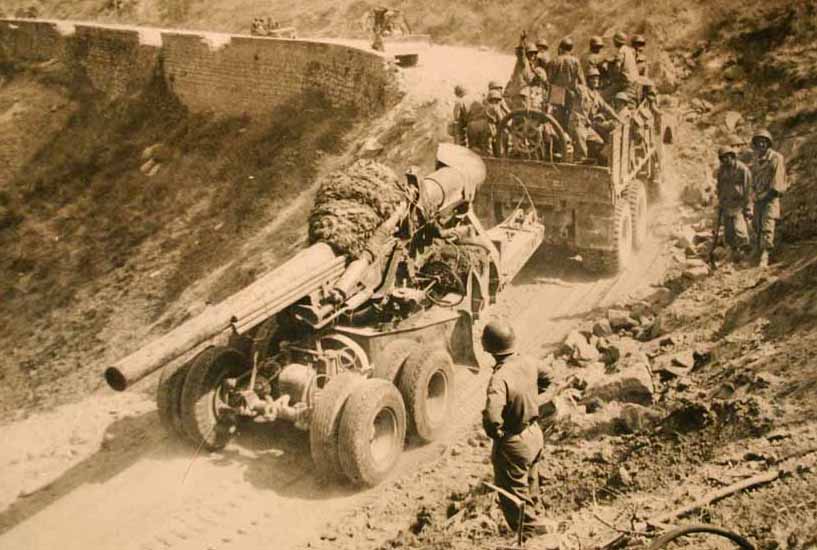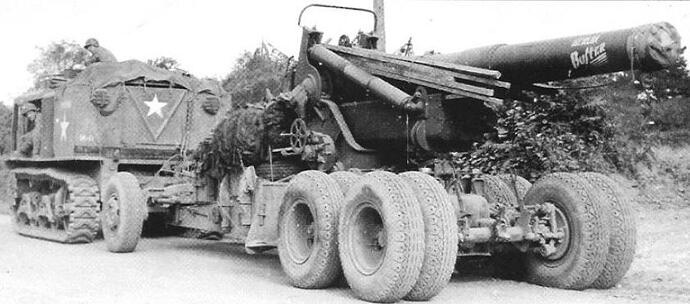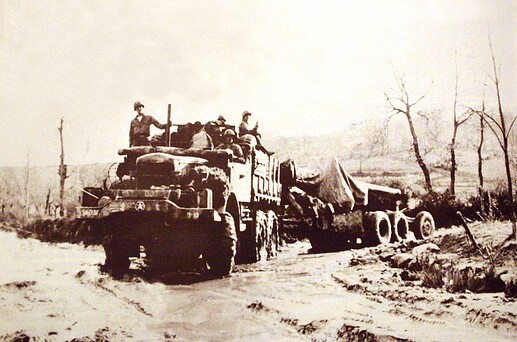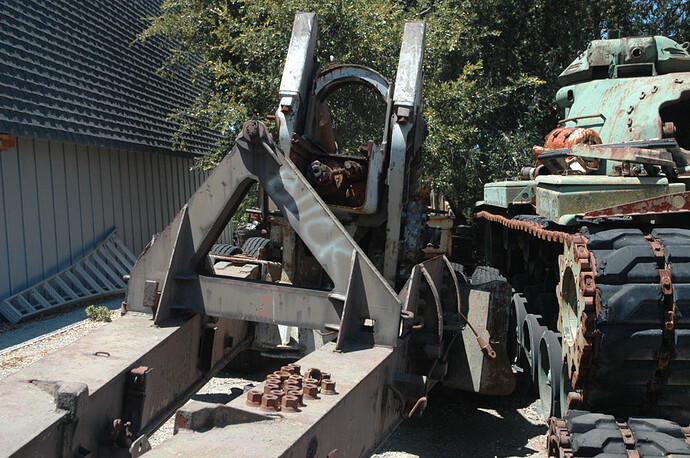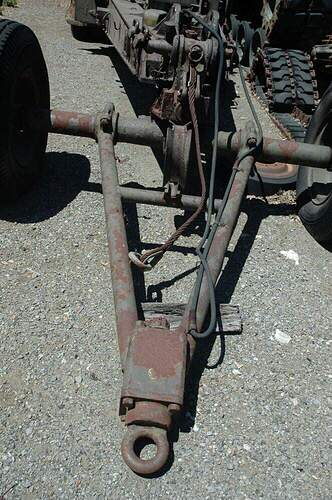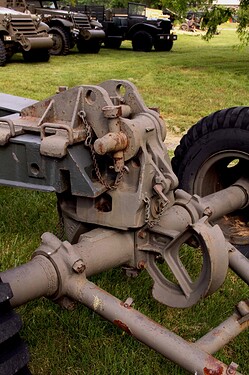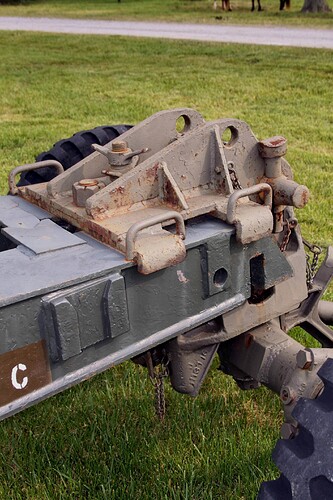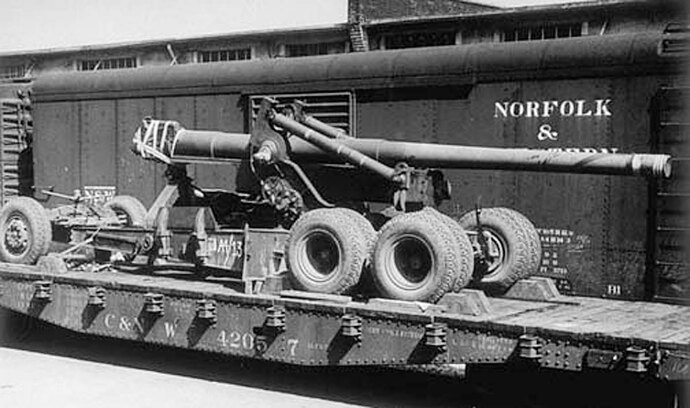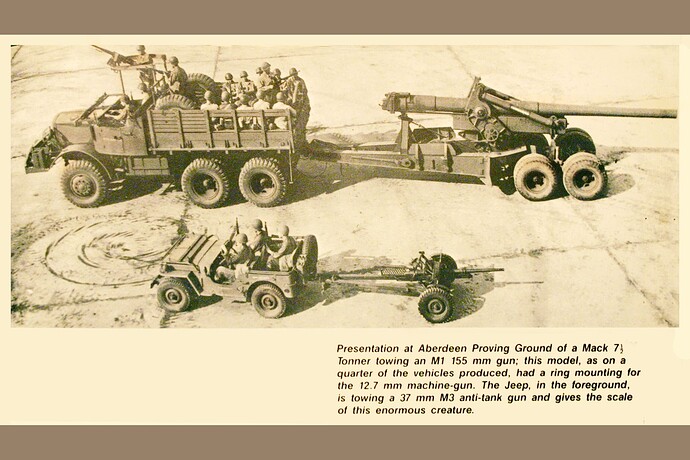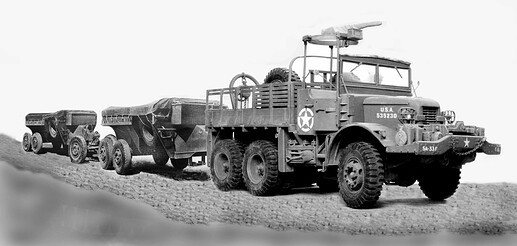have no idea about western ammo, but a typical Warsaw Pact mortar round goes off in a steep arc. I’ve heard 60 degrees many times, but even that seems a little wide. Perhaps 75 degrees? Rockets often will leave large pieces of sheet metal laying about or even embedded in the ground. Have seen entire rear portions of rockets sticking out of the ground at an angle. Their fuses are kinda odd looking, but guess they work OK. Never saw a time fuse, and only HE and a few WP mortar rounds
gary
We had a system called Cymbaline in the British Army, long time ago now.
Shell crater analysis by CPT Dave Rich on FSB RIPCORD. Notice the shrapnel furrows carved into the wood bunker decking.

This is an AN/MPQ-4A Counter-Mortar Radar in 1/72 scale scratch built by my friend Jeff Nelson:
Very nice Q-4 radar. I worked with its successor, the Q-36 and its bigger brother, the Q-37. Both great, yet finicky systems.
Yea, Jeff did a phenomenal job on the build. It was one of the signature models we needed for a large museum diorama commission project. (I think he’s still refining the CAD designs for some of the 3D printed parts while adding some other parts to be printed with the intention of building another for his own collection.)
Apparently, the Q-4 was a fairly slow and very “analog” machine. It was marginally successful when the conditions were just right, but the VC and PAVN learned that all they really had to do to avoid being located by it was to fire from positions that were not lined up with the radar emitter and reflector.
The Q-4 operator had to point the radar element towards the general direction of the incoming fire, and to do that, he used a servo control. In other words, the radar elements did not constantly rotate 360* to detect incoming rounds from any direction. It could only detect and plot incoming if it was “looking” in the right direction when the enemy rounds were fired.
(When initially developed, it wasn’t foreseen that it would be used on a non-linear battlefield, as in Vietnam. It was intended for use in Europe as defense against Soviet indirect fires while emplaced in positions to the rear of the frontlines that would not afford the enemy line-of-sight to the radar, itself. Any hoo…)
If the enemy waited to attack when the radar was oriented away from their firing position, by the time the Q-4 operator swung it around, they could complete their fire mission and then just sit tight.
The photo of CPT Rich working the crater analysis shows how the arty guys on the fire base actually used both methods (radar and crater analysis) to locate the PAVN mortar positions. The crater analysis would give the general directions to the firing points which the Q-4 operator could have ready and on-hand so as to quickly slew the radar around to a pre-identified general DOF as soon as the incoming rounds were identified (either by the sound or impact). The idea was to be ready to quickly catch and plot at least some of the incoming rounds while still in flight.
The number of suitable enemy firing points around the base were limited and tended to be re-used, so eventually, counter-battery fire effectiveness improved (but was never perfect) on the US side.
Unfortunately, that is how FireFinder radars work. The Q-36, Q-37, and latest Q-53 (truck mounted) radars still have to be pointed in the general direction you expect fire to be coming from. They are still fixed radars.
AN/TPQ-53
There is a new Mortar Locating Radar, the AN/TPQ-50 Lightweight Counter Mortar Radar (LCMR) that provides 360 degree coverage, but is still fixed and does not rotate. It send out beams in all directions to detect incoming rounds. It can be mounted on a HMMWV or ground-mounted.
In case anyone is still interested in which M40 kit is the better one, here are two in-depth build reports that will allow to see why the general opinion is in favor of Tamiya’s offering (and what shortcomings that one has):
http://panzer-modell.de/berichte/m40/m40e.php
http://panzer-modell.de/berichte/m40_tam/m40e.php
The AFV Club kit needs to have the barrel substantially lengthened in two areas. Not hard to do, but puts more of the Long in Long Tom.
Hi:
Here are a couple of relevant books for you:
https://daviddoylebooks.com/coming-soon-1/155-mm-gun-m1-long-tom-and-8-inch-howitzer-in-wwii-and-korea
Cheers,
Scott
If you build the Tamiya,their metal barrel is a great upgrade,and the 8 figures that come with the kit are really nice.
NVA liked to take a basic 60mm tube and hold it by their hands. How they hit anything; I find amazing! Can’t remember if they did this with an 82mm tube as it would be much larger to hold on to. NVA learned to dig pits later on, but rarely dug them deep enough to hide the flash. A flyover would spot a freshly dug pit, and then you add it to your pre-registered targets. Most of the time the NVA shot line of sight, and then adjusted their fire. We pretty much did the samething I might add. The one major advantage we had over the NVA mortar tubes was that ours were registered and not torn down every night. While the NVA never was able to register theirs. In my base camp we had a large mortar pit that was figure eight in shape while dug a solid six feet deep. On the north end was a 4.2" and a ChiCom 120mm tube. In the other was a U.S. 81mm and a Chec 82mm tube. Most of the ammo we used in the other guy’s tubes was ChiCom (we had two bunkers full of it).
As for incoming rounds and figuring out where it came from; that was easy. Just look to the west! Every now and then we’d catch about twenty rounds in the middle of the day, but 80% of the time it was between midnight and three in the morning. When I was parked next to the fence around June of 68; they opened the day up at around six thirty (you could set your watch by it) by mortaring us strait out of Laos. Actually a good move on their part as most guys were sleeping under sand bagged culverts with two layers of sand bags on top. They get your hands and feet hanging out in the open. Being on the small side I dug myself a two foot deep pit under it, and curled up in an old wool Army blanket. We’d then shoot the area up while they had moved to the next county. The earth was a hard clay, and there was very little (if any) cratering. Still you’d see one every now and then.
One of my close friends was an FO out of Rip Cord during the siege. Tough place!
gary
There is an aftermarket metal barrel for the Tamiya M40. Thanks for all the info, I’ll bypass the AFV Club kits and probably eventually do the Tamiya one.
Coming late to this party. (Again!)
But I toss this in for good measure. I back dated the earlier AFV Korean War Long Tom kit using one of the PSP resin wheel sets then available from Scale-Link in the UK.
This one also has the aluminum turned barrel plus a big carpenter’s nail tucked into the breach to counterbalance the weight of that barrel!
The Mack NO did not require a Limber to tow the the 155mm. In fact the truck had greater tractive effort when hitched as you see here. The M2 and M5 Limbers were often towed behind the gun when using the Mack NO. (That’s really what that pintle on the back of the gun is for.) Once the gun was emplaced the Mack might be off doing an ammo run, so later a HST might next have been assigned to move the gun and the Limber would then be required.
Seen below- Ammo Train: Two M23 8-ton Ammo Trailers being pulled by yhe Mack NO ~ Built by Utility Trailer Corp. ~ still in business today!
Photo above; copyright Ampersand Publishing & David Doyle
My attempt at the M23 Ammo Trailer
Some reference on the WWII gun:
Travel brace for the gun. (Included in all AFV kits!)
Later M5 Limber seen here. (Still correct for WWII)
After the “Korean Conflict” many Long Toms were “Donated” to the Taiwanese Coastal Defense effort. Therefore AFV Club had many, MANY, in country references for doing a post WWII M1 model kit.
I just wish they had offered BOTH variants from the get-go.*
*However if they had, there would be a lot of things I would never have otherwise learned about this weapon!
Just cross-linking these two very similar threads on the same subject:
Great minds work in the same channels!
I would think the 7.5 ton truck used in WWII would get the job done. I’d say that a 5 ton would tow it, but only with a limber. A lot of this depends on the roads and whether they are flat or you’re climbing mountains.
gary
The Mack NO was a 6x6 intended to take the gun wherever necessary, on or off road. As such it was most certainly up to the task.
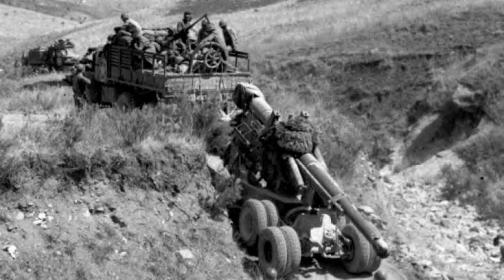
The Mack had a hitch/receiver custom designed by Mack that allowed the 155mm or the 8 inch guns (or the 8 ton ammo trailer) to be attached directly to the vehicle. Thereby transferring some of the weight of the gun into increased tractive effort for the tow vehicle. **
This was unlike the Diamond T which was a ballast tractor and had to have additional weight (scrap metal ~ i.e. ballast) added to the loadbox to achieve the necessary traction.
The only other vehicle (to my knowledge) to ever have this hitch/receiver applied was the 8x8 Sterling ~ a cancelled post-war attempt to replace the PC&F Dragon Wagon tractor.
** In addition to towing the gun, the Mack, at the same time, had a 17,000 pound loadbox capacity. Also it was capable of towing TWO M23 eight ton ammo trailers at the same time to form an ammo train.

